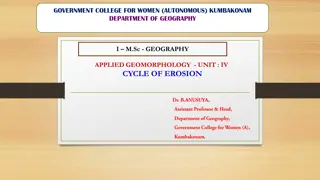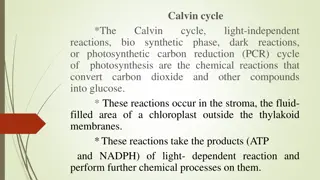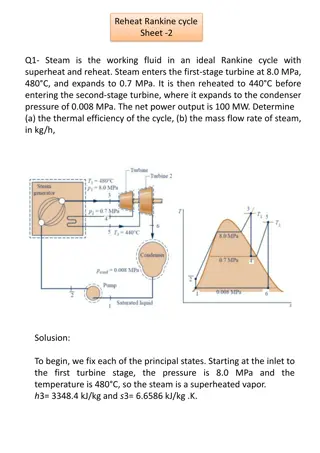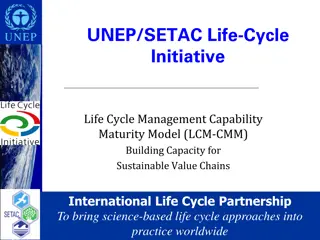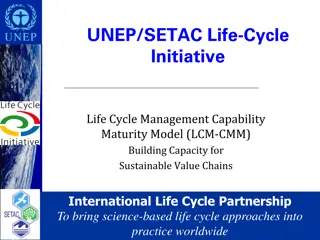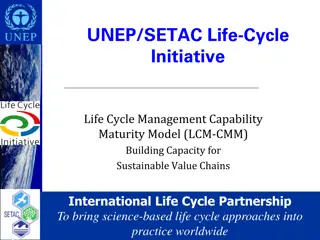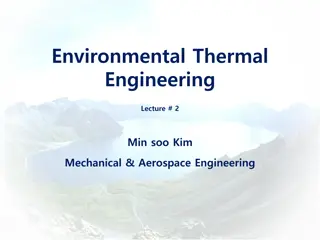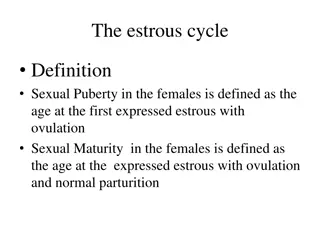
Effective Project Management Practices and Life Cycle Overview
Explore the fundamentals of project management, including project participants, hierarchy, and the project life cycle stages: Initiation, Planning, Execution, and Closure. Understand the importance of Work Breakdown Structure (WBS) and Time Management processes for successful project completion.
Download Presentation

Please find below an Image/Link to download the presentation.
The content on the website is provided AS IS for your information and personal use only. It may not be sold, licensed, or shared on other websites without obtaining consent from the author. If you encounter any issues during the download, it is possible that the publisher has removed the file from their server.
You are allowed to download the files provided on this website for personal or commercial use, subject to the condition that they are used lawfully. All files are the property of their respective owners.
The content on the website is provided AS IS for your information and personal use only. It may not be sold, licensed, or shared on other websites without obtaining consent from the author.
E N D
Presentation Transcript
ENGINEERING MANAGEMENT (GE 404) 1 LECTURE # LECTURE #2 2 Project Life Cycle and Time Management Process June 6, 2025 GE 404 (Engineering Management)
Contents 2 Objectives of the present lecture Project Management and Project Participants Project Management Hierarchy Project Life Cycle Work Breakdown Structure (WBS) Further reading June 6, 2025 GE 404 (Engineering Management)
Objectives of the Present lecture 3 To provide an overview of the Project life cycle To discuss Work Breakdown Structure (WBS) To give an overview of Time Management Process June 6, 2025 GE 404 (Engineering Management)
Project Management and Project Participants 4 Project management is the discipline of managing a series of tasks within a given amount of time and within a budget Project participants consist of all the individuals entities who either: Work on the project directly, such as team members, consultants, contractors, and the sub-contractors Influence the project directly, such as the internal project stakeholders (including functional managers and executives), the project sponsor, and the customer/client Usually, the project participants are all listed in the project management hierarchy of the project. June 6, 2025 GE 404 (Engineering Management)
Project Management Hierarchy 5 A project management hierarchy is the hierarchy of roles in a project (based on leadership). By looking at the project management hierarchy, one can understand who reports to who and who has authority (implied or explicit) over who in the project. For example, here's the project management hierarchy in an web project: Project Owner Project Sponsor Project Manager Team Leader Database Architect Programmer Designer HTML Developer In the above example, we understand that the HTML Developer reports to the team leader, who in turn reports to the project manager, and who finally reports to the project sponsor and the project owner. There is no standard/generic project management hierarchy, but PM hierarchies for the same industry are very similar. June 6, 2025 GE 404 (Engineering Management)
Project Life Cycle 6 The project life cycle consists of four phases: Phase 1: Initiation/Concept Phase 2: Planning Phase 3: Execution (including monitoring and controlling) Phase 4: Transfer/Closure June 6, 2025 GE 404 (Engineering Management)
Initiation Phase 7 The Initiation phase begins by defining the Scope, purpose, objectives, resources, deliverables, timescales and structure of the project. The next step is to develop a Business Case, including several possible solutions and a cost/benefit analysis for each. A Feasibility Study should then be carried out to ensure that the chosen solution is feasible and has an acceptable level of risk. The next step is to define the Terms of Reference, followed by the appointment of the Project team. The final step is to carry out Phase Review before seeking approval to proceed. June 6, 2025 GE 404 (Engineering Management)
Planning Phase 8 Planning is the process of thinking systematically about the future in order to decide what our goals are, and how we are going to achieve them. Thus planning involves making preparations, and deciding the best course of action for a project. The first step of the Planning phase is the creation of a detailed Project Plan which the project manager will refer throughout the project to monitor and control time, cost and quality. The project manager will then create the following plans: Resource Plan: to identify the staffing, equipment and materials needed Financial Plan: to quantify the financial expenditure required Quality Plan: to set quality targets and specify Quality Control methods Risk Plan: to identify risks and plan actions needed to minimise them Acceptance Plan: to specify criteria for accepting deliverables Finally, a Phase Review is carried out to approve the start of the Project Execution phase. June 6, 2025 GE 404 (Engineering Management)
Execution Phase 9 During the Project Execution phase the project team produces the deliverables while the project manager monitors and controls the project delivery by undertaking: Time Management: tracking and recording time spent on tasks against the Project Plan Cost Management: identifying and recording costs against the project budget Quality Management: reviewing the quality of the deliverables and management processes Change Management: reviewing and implementing requests for changes to the project Risk Management: assessing the level of project risk and taking action to minimize it Issue Management: identifying and resolving project issues Acceptance Management: identifying the completion of deliverables and gaining the customers acceptance Communications Management: keeping stakeholders informed of project progress, risks and issues June 6, 2025 GE 404 (Engineering Management)
Closure Phase 10 Once the customer has accepted the deliverables and a Phase Review has been carried out to determine whether the project objectives have been achieved, the project is ready for Closure. AProject Closure Report should list all of the actions required. When this has been approved, the listed actions are completed to release project resources, hand over deliverables, and inform all stakeholders that the project is now closed. June 6, 2025 GE 404 (Engineering Management)
Evaluation 11 Shortly after the project has been closed, an Evaluation (also known as a Post-Implementation Review) should be carried out to determine the project's overall success and find out whether the benefits stated in the original Business Case were actually realised. Any lessons learned should be documented for future projects. June 6, 2025 GE 404 (Engineering Management)
Work Breakdown Structure (WBS) 12 1. The Project Management Body of Knowledge (PMBOK) defines the work breakdown structure as A deliverable oriented hierarchical decomposition of the work to be executed by the project team. 2. The work breakdown structure visually defines the scope into manageable chunks that a project team can understand. 3. Figure shows a sample WBS with three levels defined. June 6, 2025 GE 404 (Engineering Management)
WBS (Contd.) 13 A work breakdown structure starts with the project as the top level deliverable and is further decomposed into sub- deliverables The top level thus represents the final deliverable or project The sub-deliverables are further decomposed to the specific work packages required to produce the sub- deliverable. The work package represents the list of tasks or "to-dos" to produce the specific unit of work. June 6, 2025 GE 404 (Engineering Management)
Definition of Activity and Event 14 Activity is a single work step (element) that has a recognizable beginning and end and requires time and resource for its accomplishment. An Event marks the point in time when an activity completes. Sequence of Activities for House construction project (Network diagram) Note: Activity is often used as an alternative term for task. June 6, 2025 GE 404 (Engineering Management)
Time Management Process 15 Time is the most valuable resource in a project. Every delivery that you are supposed to make is time-bound. Therefore, without proper time management, a project can head towards a disaster. Scheduling is the easiest way of managing project time. In this approach, the activities of the project are estimated and the durations are determined based on the resource utilization for each activity. Cost always plays a vital role in time management. This is due to the fact that schedule over-runs are quite expensive. June 6, 2025 GE 404 (Engineering Management)
Steps of the Time Management Process 16 Time management is a key responsibility of a project manager. Following are the main steps in the project time management process: Defining Activities Sequencing Activities Resource Estimating for Activities Duration and Effort Estimation Development of the Schedule Schedule Control 1. 2. 3. 4. 5. 6. June 6, 2025 GE 404 (Engineering Management)
Defining Activities 17 First of all, the high-level requirements are broken down into high-level tasks or deliverables. Then the high-level tasks/deliverables are broken down into activities and presented in the form of WBS (Work Breakdown Structure). June 6, 2025 GE 404 (Engineering Management)
Sequencing Activities 18 The activities identified in the previous step should be sequenced based on the execution order. When sequencing, the activity interdependencies should be considered. June 6, 2025 GE 404 (Engineering Management)
Resource Estimating for Activities 19 The estimation of amount and the types of resources required for activities is done in this step. June 6, 2025 GE 404 (Engineering Management)
Duration and Effort Estimation 20 This is one of the key steps in the project planning process. Since estimates are all about the time (duration), this step should be completed with a higher accuracy. Once the activity estimates are completed, critical path of the project should be identified in order to determine the total project duration. This is one of the key inputs for the project time management. June 6, 2025 GE 404 (Engineering Management)
Development of the Schedule 21 Activity sequence, duration of each activity and the resource requirements/allocation for each activity are the most important factors. In case if you perform this step manually, you may end up wasting a lot of valuable project planning time. There are many software packages, such as Microsoft Project, that will assist you to develop reliable and accurate project schedule. As part of the schedule, you will develop a Gantt chart in order to visually monitor the activities and the milestones. June 6, 2025 GE 404 (Engineering Management)
An Example of a Construction Schedule 22 June 6, 2025 GE 404 (Engineering Management)
Schedule Control 23 No project in the practical world can be executed without changes to the original schedule. Therefore, it is essential to update the project schedule with ongoing changes. June 6, 2025 GE 404 (Engineering Management)
Work Breakdown Structure Video 24 This video demonstrates how to create WBS using MindView software June 6, 2025 GE 404 (Engineering Management)
Further Reading 25 Wysocki, R K, Effective Project Management, Wiley Heerkens, G R, Project Management, McGraw-Hill June 6, 2025 GE 404 (Engineering Management)
Thank You 26 Questions Please June 6, 2025 GE 404 (Engineering Management)





